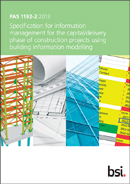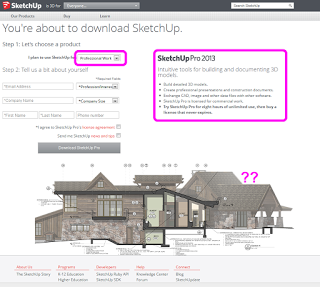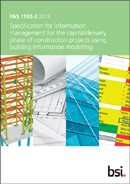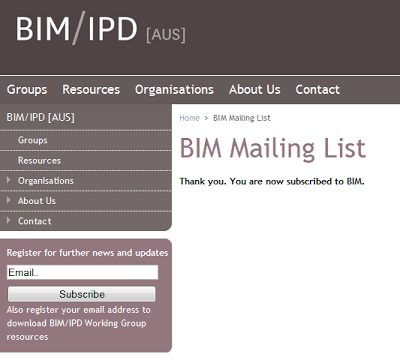Image:
Tag: bim
Many legal questions are getting asked in and around the BIM community. From “Who owns the model?” to “Who is responsible to track changes?”, we find ourselves in a new and somewhat scary world of legal consequences to our modelling action.
Some of these issues are captured in the following downloads and quotes, which in turn were taken from a post on Out-Law.com, a legal news site run by Pinsent Masons.
Downloads:
the publication of the BIM Protocol by CIC (15-page / 835KB PDF)
guidance on professional indemnity insurance issues relating to BIM projects (11-page / 478KB PDF)
‘Scope of Services for Role of Information Manager’ document (5-page / 299KB PDF)
Here are a few interesting quotes:
The Protocol published by the Construction Industry Council (CIC) is to be incorporated into existing construction contractual arrangements, although its terms can then be amended to set out particular rights around intellectual property ownership. It sets out the obligations that the different contracting parties would have to adhere to under the terms of individual projects…
“…it is a clear step forward and should accelerate the up-take of BIM across the UK construction industry, particularly on public sector projects.”
(quoting Infrastructure law specialist Khalid Ramzan of Pinsent Masons)
As might be expected, the definition of BIM is perhaps a little naive, or maybe just utopian?
A BIM system uses a computer generated model to collect and manage information about the design, construction and operation of a project centrally. It is especially useful where many parties, such as different sub-contractors, provide input on the same project. Any changes to the design of a project made during its construction are automatically applied to the model.
Read more:
BIM Protocol publication will drive ‘widespread adoption’ of the technology, says expert
EDIT: There are some more resources available over at REVIT Structure Learning Curve: The BIM Protocol, a Best Practice Guide for Professional Indemnity Insurance when using BIM
Free download of PAS 1192-2:2013 Specification for information management for the capital/delivery phase of construction projects using building information modelling at:
Heads-up via
Pls read“@bimstophq: The publication of the #BIM protocol set to drive “widespread adoption” out-law.com/en/articles/20… #AEC #Revit #ArchiCAD”
— eduardo (@edmcolon) March 3, 2013
Or is it a professional, individual endeavor? Or both? Five quick quotes from different parts of the latest JBIM:
When practiced correctly, BIM is meant to support collaboration across the facilities life cycle. BIM is the flow of information through a project, from inception to completion and throughout the entire life cycle of a structure.
Unfortunately, the industry is still developing separate models that are not communicating.
… as projects become bigger and more distributed, some teams struggle with the collaborative aspects inherent to BIM.
The utilization of BIM technology can result in improved occupational safety by connecting the safety issues more closely to construction planning.
IFC4 introduces the concept of material profiles, where axis-based components, such as beams, pipes and ducts, can be described by paths and cross-sections of materials, along with offsets relative to the axis and end points.
The journal seems to contain quite a bit of info on NBIMS, NBIMS-US and even IFC4.
Heads-up via:
Download BIM Can Be a Team Sport | Journal of Building Information Modeling – Fall 2012 | Bradley BIM
The sheer volume of different BIM standards can be confusing in itself – and that is without even considering the
a) usefulness,
b) applicability,
c) practicality or
d) up-to-date-ness
of these different standards
In any case, a recent and decent list has been started at:
CAD addict: List of Existing BIM Standards
Some other useful links / lists:
Weblinks (big list of Standards on natspec.org)
BIM Standard and BIM Example Drawings Sharing (forum thread)
BIM Libraries | Whole Building Design Guide
BIM/IPD Aus (standards and guidelines with Australian focus)
The task of adopting BIM can be very daunting for a small firm.
…
there will likely be negative consequences for not doing it.
…
the technology is evolving to have a democratizing effect on the design industry
…
There is no set guide on how to implement BIM.
…
There is no single tool that can handle all aspects of BIM
…
New team members who know current tools but don’t know much about design and construction can be a good compliment to a staff that knows how to design and build but doesn’t know the latest BIM tools.
…
If you are looking for a clear road map of how to deliver a BIM project, you won’t find it.
Read the full article by Kris Weeks at:
Braving the New World of BIM
“a challenge having multiple projects being designed in different versions of Revit.
Four years ago, the data transferred from these links was flawed or incomplete. Software lockups were common. With the advancement of the software, communication between Revit and analytical programs has improved but issues still remain. Four years later, the transfer is still not seamless.
Early discussions regarding clash detection expectations may lead the design team to model elements differently, for instance, just modeling the bond beams in bearing walls to avoid sifting through hundreds of non-critical clashes.
”
A recent post from Eat Your CAD that has been getting some interest on Twitter … I think more than a bit of it is tongue-in-cheek:
EYC – Addressing the 5 most important BIM questions
Here are a few quotes that tickled me:
- Adopting BIM is a difficult and often unrewarding task.
- “Open BIM” is what people on the leading edge are aspiring to and solves all your problems.
- You’ll be expected to do extra work at a much earlier stage than you would have traditionally at a much lower fee.
- BIM is based on a 3D model and therefore requires everything to be modelled as an exact copy of the final manufactured building component.
- the quicker your architects can become qualified in structural engineering, the more benefit you’ll gain from BIM.
- Mention that your closest competitors have all migrated to Revit and within a short space of time you’ll be promoted and your bosses will be able to smile smugly over their 5-iron and confidently state “We do BIM. What do you think about them apples?”
- You cannot do BIM if you are a civil engineer, as civil engineers don’t build buildings.
- To be safe, always leave an empty space at least 300mm clear of another discipline’s object.
- Model as much detail as you can
- Add every property that you can to every object
Funny stuff 🙂
The Fridays with Vico webinars are a free, educational series geared towards general contractors and owners… topics range from BIM trends, to case studies and best practices, to new concepts for the industry.
For example, the BIM Master Class Series: The series grows progressively more difficult with complex theory, methodologies, and best practices. The goal of the BIM Master Class series is simple: instruct as many construction professionals as possible about the many facets of BIM.
Unfortunately, you do need to fill out a registration form to view the recorded webinars, but you don’t have to provide credit card details or pay for anything. After entering registration details, you will receive a link to a streaming ASX file, which in turn links to a WMV via the MMS protocol.
If you want to store an offline copy (ie. download the WMV), use SDP Downloader from:
The SDP Multimedia website for ASF download and MMS protocol specification
(you will probably need to set protocol to HTTP in Setup)
Here are the links to the Master Class Series:
BIM 101: this course examines the progression from 2D drawings to the 3D model to the 4D schedule and the 5D estimate. We also look at layouting solutions from Trimble and highlight how to use the preconstruction work as production control on the jobsite.
BIM 201: in this course we examined the subject of coordination. Instead of concentrate on 3D clash detection, we introduced the idea of coordination in time and place. This nuance is a very important distinction which helps tremendously with coordination priorities.
BIM 301: BIM contracts are starting to work their way into the legal lexicon and this primer on the ConsensusDOCs and AIA 202 is essential. Contracts play a central role in defining deliverables, interactions with project stakeholders, and risk obligations for commercial building projects. Special guest speaker, Richard Lowe, Partner from Duane Morris LLP and chair of the AGC BIMForum Legal Subforum, delivers the course content.
BIM 401: focused on the theme of model-based scheduling, this course highlighted flowline theory, a visualization of the crews by location by date. We addressed major themes for Schedulers: location breakdown structures; task lists and logic; quantities in locations; task criticality and prioritization; risks; production control measures; contractor meeting procedures; and resource and production rate commitments.
BIM 501: model-based estimating starts with a robust construction quantity takeoff. With these construction-caliber quantities, GCs can drive precise estimates and schedules. And with the easy visualization the model affords, estimators can quickly see which elements have been costed already and which elements still need attention. And it also allows Owners to see which/how areas of the building are contributing to the total cost of the building.
BIM 502: even if the bid is due in two weeks, a massing model can still provide a great basis for the Conceptual Estimate. This conceptual estimate can then be linked to the model progression specification. Now the estimate can evolve alongside the design. The “marketing bid” now becomes cost plan version one and numerous alternate cost plans can be quickly created to offer the Owner insight to the design iterations. This data-driven decision making replaces 2D spreadsheet estimating.
BIM for Executives: the series concludes with a session specifically for senior managers. This course puts the dollars and cents around the technology, methodology, and personnel. As company’s embrace BIM and train their staff to use these new tools they find out, often too late, that there is a new language they need to learn and that they need to be prepared to translate for their clients. Senior managers, though they may never use the software or delve into the services, need to know what BIM does, how BIM works, and most importantly – how to sell it to clients and colleagues.
See the rest of the free webinars at:
Fridays with Vico | BIM Webinars | Vico Software
Also on Youtube at:
http://www.youtube.com/user/FridaysWithVico/videos?flow=grid&view=1
Product Tutorials
Autodesk® Revit® Architecture 2011 Video Tutorials
BIM Curriculum for Architecture, Engineering and Construction Management tutorials
Autodesk and Yale University BIM Symposium
As BIM adoption accelerates throughout the building industry, so does the need for BIM integration into the education curricula of AEC disciplines. This change in the academic environment is quickly becoming a reality. In April of 2010, at Yale University, Phil Bernstein, vice president of industry strategy and relations at Autodesk and lecturer at Yale School of Architecture, along with Yale Professor Peggy Deamer developed and moderated the Yale BIM Symposium: Implications for Architectural Pedagogy. The following videos and proceedings represent some of the several presenters from this informative event.
Phil Bernstein—Welcome and Introduction to BIM DiscussionPhil Bernstein—Implications of BIMPeggy Deamer—BIM’s Pedagogical Placement in AcademiaJohn Messner—Leveraging BIM to Enable the Development of Collaborative KnowledgeJosh Emig—BIM in Integrated Design and Construction EducationDavid Fano—Engaging the Tools: Digital Fabrication
Inspirational Videos
US Department of Energy Solar Decathlon
Autodesk Builds LEED CI Platinum Certified Headquarters Video
Phil Bernstein at AIAS Grassroots Leadership Conference 2009
Change Your World: BIM
Change Your World: Generation Next
Change Your World: Education Community
First of all, this was a bit too funny not to share:
Finally! I am now subscribed to BIM itself! What will this new entity reveal? Has BIM become self-aware?
Enough of that…
From the BIM/IPD [AUS] website:
The Australian Institute of Architects and Consult Australia formed a BIM and IPD Steering Group in mid-2011 with participation of leading experts from architecture, engineering and construction. The purpose of this group is to develop resources and guidelines for practitioners in the Australian building industry. The Steering Group has formed four Working Groups with focus on particular themes to jointly produce material that will be managed and updated via this website.
There are a few handy resource pages, including the following:
| BIM QnA > | BIM STANDARDS > | |
| BIM GLOSSARY > | COLLABORATION DOCUMENTS > | |
| REPORTS > | LEGAL DOCUMENTS > | |
| WORKING GROUP PUBLICATIONS > | CONTENT LIBRARIES > | |
| REPORTS > |









